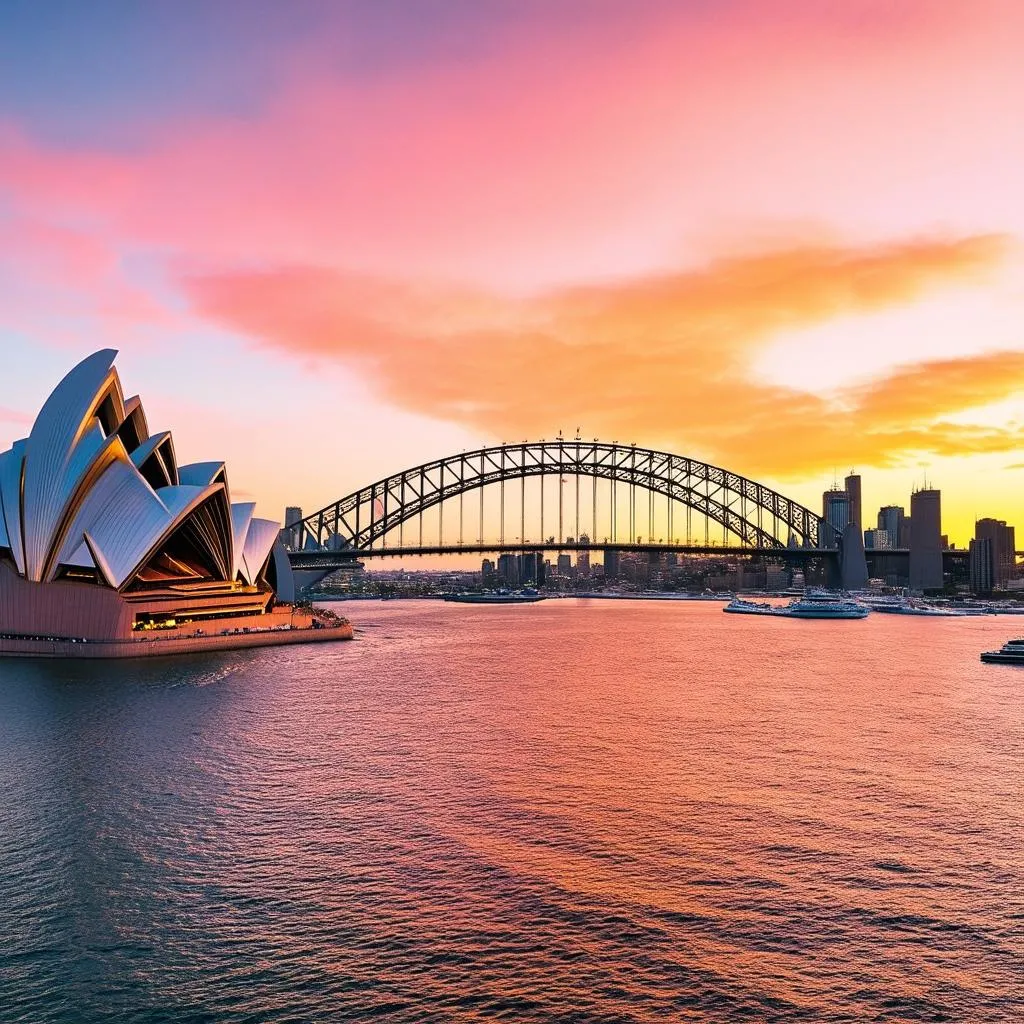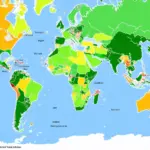“G’day, mate!” Have you been dreaming of the Land Down Under? The iconic Sydney Opera House, the vast Outback, the Great Barrier Reef teeming with life – Australia holds an allure for travelers worldwide. But before you book that flight and say “cheerio” to your worries, let’s tackle a crucial question: How Much Does It Cost To Travel To Australia?
Don’t worry, we’ve got you covered! This comprehensive guide will break down all the costs involved, from flights to accommodation, food, and activities, and help you plan your dream Aussie adventure without breaking the bank.
Factors Affecting Your Australia Trip Cost
Just like planning a trip to Uluru requires careful packing for the desert climate, understanding your budget means considering various factors:
1. Travel Style: Are you a backpacker on a shoestring budget, a luxurious traveler seeking comfort, or somewhere in between?
2. Travel Time: Peak season (summer in Australia, December-February) will be pricier than shoulder seasons (spring and autumn).
3. Destination: Sydney and Melbourne tend to be more expensive than smaller cities like Adelaide or Perth.
4. Duration: The longer you stay, the more it will cost (though you might find better deals on longer stays for accommodation).
Estimated Costs for a Trip to Australia
Here’s a breakdown of typical costs for a two-week trip to Australia:
Flights:
- Round-trip economy flight from the US: $1,500 – $3,000
- Round-trip economy flight from Europe: $1,200 – $2,500
- Round-trip economy flight from Southeast Asia: $500 – $1,500
Accommodation:
- Budget (hostels, dorm rooms): $25 – $50 per night
- Mid-range (hotels, motels): $80 – $200 per night
- Luxury (boutique hotels, resorts): $250+ per night
Food:
- Budget (groceries, street food): $30 – $50 per day
- Mid-range (casual dining): $50 – $100 per day
- Fine dining: $100+ per day
Activities:
- Free activities (hiking, beaches): $0
- Paid attractions (museums, tours): $30 – $100 per day
- Adventure activities (diving, skydiving): $100+ per day
Transportation:
- Public transport (cities): $10 – $20 per day
- Domestic flights: $100 – $500+ (depending on distance)
- Rental car: $50 – $100+ per day
Visa:
- Electronic Travel Authority (ETA) for eligible nationalities: $20
Total Estimated Cost for a Two-Week Trip:
- Budget: $2,500 – $4,000
- Mid-range: $4,000 – $7,000
- Luxury: $7,000+
Pro Tip: “Planning your trip during the shoulder seasons not only saves money but also lets you experience Australia without the peak season crowds,” advises travel expert, Sarah Jones, author of “The Ultimate Aussie Adventure Guide.”
Planning Your Aussie Budget
1. Set a Realistic Budget
Determine how much you’re comfortable spending and prioritize your must-haves. Are you dying to dive the Great Barrier Reef or hike Uluru? Allocate more funds to those experiences.
2. Book Flights in Advance
Flight prices fluctuate, so start tracking them early and be flexible with your travel dates for the best deals.
3. Consider Alternative Accommodation
Explore options like Airbnb, hostels, or even house-sitting for more affordable and unique stays.
4. Eat Like a Local
Try local markets, food courts, and grocery stores for budget-friendly and delicious meals.
5. Take Advantage of Free Activities
Australia is brimming with free activities, from stunning beaches and national parks to vibrant street art scenes and free city walking tours.
6. Travel Slow
Instead of trying to cram everything in, choose a few key destinations and explore them in depth. This will not only save you money on transportation but also allow for a more immersive experience.
 Australia Travel Costs
Australia Travel Costs
Feng Shui Tips for Auspicious Travels
Believe it or not, incorporating a few Feng Shui principles can enhance your Australian adventure:
- Pack a compass: Carrying a compass can help you stay oriented and symbolize finding your way.
- Choose auspicious colors: Wearing colors like red (for luck), yellow (for prosperity), and green (for growth) can invite positive energy.
- Pack meaningful souvenirs: Bring back items that resonate with you and symbolize the positive experiences you had.
FAQs About Travel Costs in Australia
1. Is Australia an expensive country to visit?
Australia can be perceived as expensive, but it’s all relative to your travel style and choices. With careful planning, you can experience Australia on a budget.
2. When is the cheapest time to fly to Australia?
Generally, the cheapest time to fly to Australia is during the shoulder seasons (spring and autumn).
3. What is the currency in Australia?
The currency in Australia is the Australian dollar (AUD).
4. Can I use my credit card everywhere in Australia?
Credit cards are widely accepted in Australia, but it’s always a good idea to carry some cash for smaller purchases or in remote areas.
Explore More with Travelcar.edu.vn
For more travel inspiration, tips, and guides to help you plan your Australian adventure, visit TRAVELCAR.edu.vn. Discover the hidden gems of Melbourne, uncover the secrets of the Great Ocean Road, or delve into the ancient history of Uluru – we’ve got your Aussie travel needs covered.
 Sydney Harbour at Sunset
Sydney Harbour at Sunset
Conclusion
While the cost of traveling to Australia can vary, remember that your budget shouldn’t deter you from experiencing the wonders of this incredible country. By planning smartly, prioritizing your spending, and embracing the spirit of adventure, you can create memories that will last a lifetime without breaking the bank.
What are your top tips for budget-friendly travel in Australia? Share your thoughts and experiences in the comments below!
